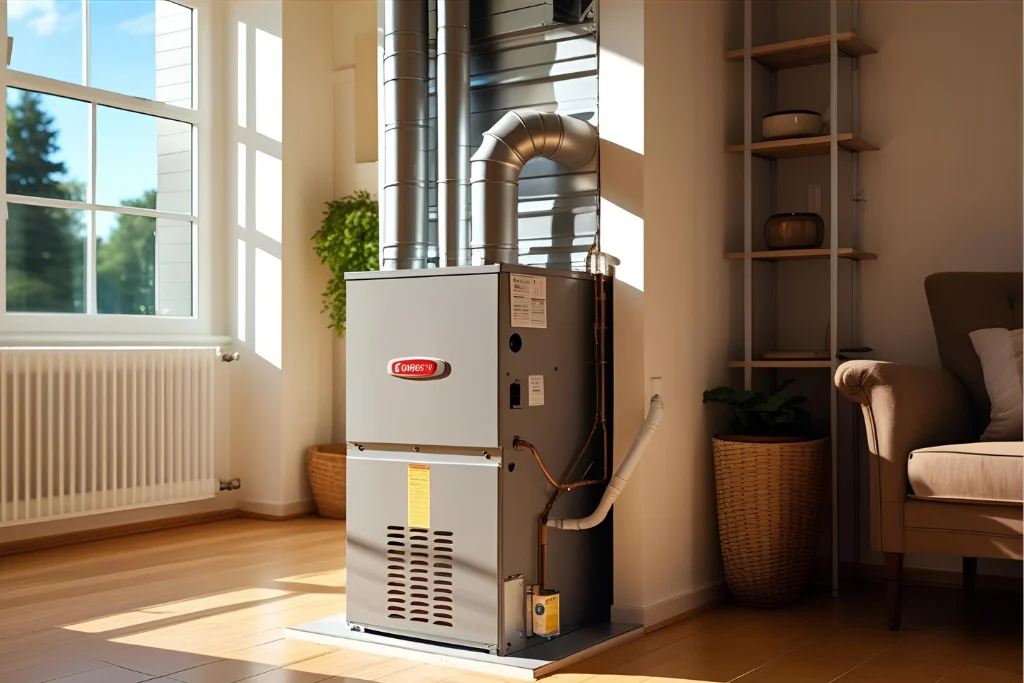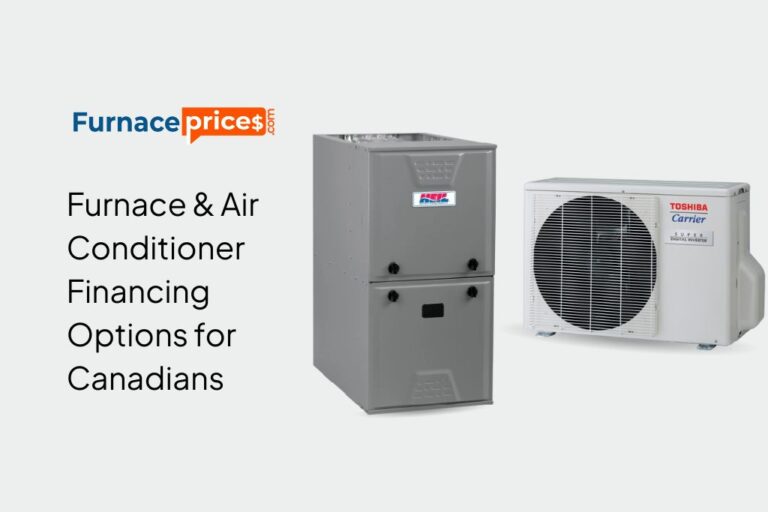Furnace Sizing: A Comprehensive Guide for Homeowners in Hamilton, Burlington, Oakville, Milton, Brantford, and Cambridge, Ontario

Introduction
When winter whispers its icy breath across Ontario, a dependable furnace becomes essential for home comfort. However, understanding how to properly size a furnace for your home is just as critical as selecting the right unit. An improperly sized furnace can lead to inefficiency, elevated energy costs, and reduced comfort levels. This comprehensive guide aims to help homeowners in Hamilton, Burlington, Oakville, Milton, Brantford, and Cambridge, Ontario, navigate the intricacies of furnace sizing.
Importance of Proper Furnace Sizing
Selecting the right size furnace is fundamental to your home’s heating system efficiency. A furnace that is too small often struggles to maintain a comfortable temperature, leading you to crank up the heat and increase energy bills. In contrast, an oversized furnace can lead to frequent cycling on and off, potentially causing uneven heating and increased wear on the system.
Here’s why proper sizing matters:
Energy Efficiency : A correctly sized furnace runs efficiently, leading to optimal energy use.
Cost Savings : Efficient operation results in lower utility bills.
Comfort Levels : A properly sized furnace distributes heat evenly, maintaining comfort throughout your home.
System Longevity : Avoiding short cycling can extend the life of your furnace.
Understanding BTUs
The size of a furnace is generally measured in BTUs (British Thermal Units), which is the amount of heat it can produce in one hour. The correct BTU rating for your home will depend on several factors, including:
Home Size : The overall square footage of your home.
Insulation : How well your home retains heat.
Climate : Local temperature averages during winter.
Air Leakage : The amount of air that can escape from or enter your home.
Calculating BTUs for Your Home
To determine the necessary BTUs for your furnace, you can follow this basic formula:
Calculate the square footage of your home. For example, if you have a single-story home with a footprint of 1,500 square feet, that number is 1,500.
Use the following guideline to determine the BTUs needed:
For homes in Ontario, a general approximation is:
30 BTUs per square foot for well-insulated homes
35 BTUs per square foot for homes with average insulation
40 BTUs per square foot for homes with poor insulation
For a 1,500-square-foot home with average insulation, the calculation would look like this:
1,500 sq. ft. x 35 BTUs/sq. ft. = 52,500 BTUs required.
Additional Factors to Consider
While the square footage is a significant factor, additional considerations are crucial in determining the right furnace size:
Ceiling Height : Higher ceilings require more BTUs because of the increased air volume.
Number of Windows : More windows can result in higher heat loss, necessitating a larger furnace.
Basements and Attics : Conditioned spaces like a finished basement or attic can impact the calculation, as they may require additional heating.
Local Climate : In areas like Hamilton, Burlington, Oakville, Milton, Brantford, and Cambridge, winter temperatures can vary. This can affect the performance and size of your furnace.
Furnace Sizing Chart
Below is a furnace sizing chart tailored to homeowners in Hamilton and surrounding areas based on BTUs required per square foot.
Home Size (sq. ft.) Well-Insulated (BTUs) Average Insulation (BTUs) Poor Insulation (BTUs)
1,000 30,000 35,000 40,000
1,500 45,000 52,500 60,000
2,000 60,000 70,000 80,000
2,500 75,000 87,500 100,000
3,000 90,000 105,000 120,000
This chart serves as a guideline for homeowners, but it’s always advisable to consult with a qualified HVAC technician to ensure accurate calculations tailored to your unique home layout and heating needs.
Professional Assistance in Furnace Sizing
While homeowners can use these guidelines to estimate their furnace requirements, the complexities of furnace sizing often necessitate professional input. HVAC professionals utilize specialized calculation methods, such as Manual J calculation, which considers variables like orientation, window sizes, local climate data, and more.
Common Myths About Furnace Sizing
As homeowners consider furnace options , it’s important to debunk common myths surrounding furnace sizing:
Myth: Bigger is Better : Many believe that a larger furnace will heat a home more effectively. In reality, an oversized furnace can lead to rapid temperature swings and increased energy bills.
Myth: Input Without Output : Some homeowners think that if a furnace has a high BTU rating, it will be efficient regardless of the home’s needs. Efficiency hinges on proper sizing and installation.
Myth: Brand Matters More Than Size : While reputable brands provide reliability, an incorrectly sized furnace will always underperform, regardless of its manufacturer.
Myth: All Homes are the Same : Each home has unique characteristics that influence heating needs. Factors like age, insulation, layout, and local climate make it imperative to assess every home individually.
The Importance of Zoning
For larger homes, different sections may require varying heating levels. Implementing a zoning system can optimize comfort throughout the house. Zoning directs different levels of heat to specific areas. When considering your furnace size, think about whether you’ll need zoning to address differences in heating needs.
The Role of Insulation in Furnace Sizing
Proper insulation plays a critical role in both energy efficiency and furnace sizing. Homes with good insulation:
Retain heat effectively
Reduce energy consumption
Minimize the BTUs needed to maintain desired temperature levels
If you’re unsure of your home’s insulation quality, consider hiring a professional to conduct an energy audit, which can identify weaknesses and areas for improvement.
Tips for Homeowners
Conduct a Manual J Load Calculation : Work with an HVAC professional to perform this detailed calculation, which ensures accurate sizing based on your individual home needs
Assess Existing System : If you currently have a furnace, analyze its performance to gauge whether it adequately meets your heating requirements.
Consider Future Changes : If you plan to do significant renovations or expansions, factor this into your furnace sizing calculations.
Stay Ahead of Maintenance : Make sure your furnace is regularly maintained. A well-maintained furnace operates at peak efficiency, regardless of size.
Conclusion
Understanding the parameters of furnace sizing is essential for making informed decisions that can lead to improved energy efficiency, comfort, and cost savings. Homeowners in Hamilton, Burlington, Oakville, Milton, Brantford, and Cambridge should take the time to properly assess their heating needs and consult with professionals for the most accurate sizing
Ultimately, the right furnace can significantly enhance your home experience during those cold Ontario winters. By considering the factors discussed in this guide and consulting with HVAC experts, homeowners will be on their way to choosing the perfect furnace for their beloved homes.
As your home deserves the best comfort possible, don’t hesitate to reach out for help when navigating heating needs—your ideal furnace awaits!
For more detailed guidance on proper furnace sizing and energy efficiency standards, visit Natural Resources Canada at nrcan.gc.ca. They provide trusted tools, heating system advice, and energy-saving tips tailored to Canadian homeowners.
🔥 Get Started Today with FurnacePrices.com!
Ready to take control of your home comfort? Whether you’re exploring furnace or air conditioner options, we make it easy to compare prices, find expert advice, and connect with trusted professionals—all tailored specifically for Ontario residents.
📍 Serving Areas: Hamilton, Burlington, Brantford, Cambridge, Kitchener, Milton, Oakville
📩 Have questions?
Reach out to us at contact@furnaceprices.com or fill out the form below to get personalized recommendations.
Start your journey to a warmer, more energy-efficient home today!
👉 Visit Our Homepage | Get Buying Tips







